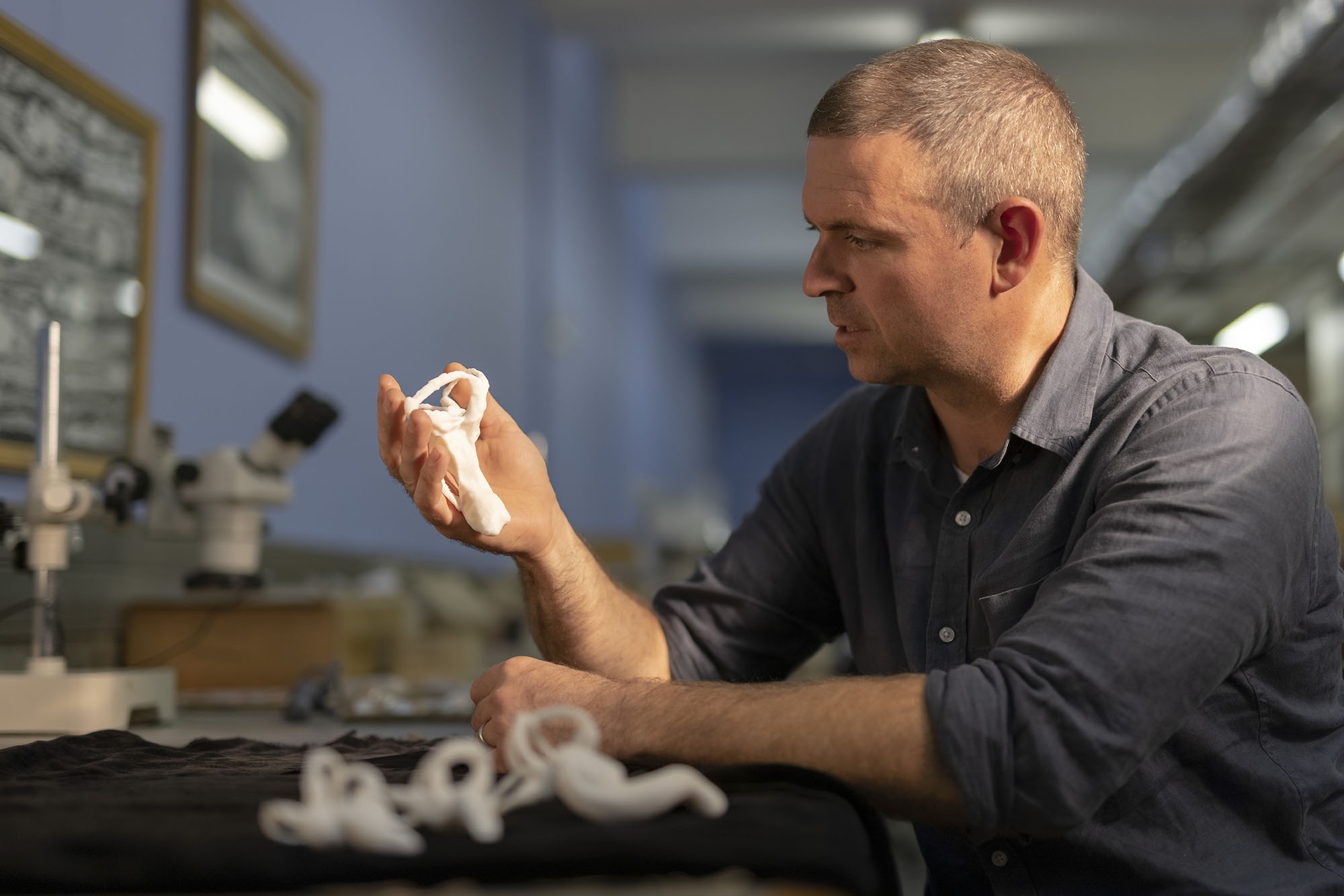Shuvuuia was an odd creature with long legs, a fragile skull and powerful arms that had a single claw on each hand.
It lived in the deserts of what is now Mongolia, around 65 million years ago and its strange adaptations have long puzzled scientists. There have even been suggestions that this wacky dinosaur was a prehistoric version of an aardvark that ate termites.
In an academic paper that appeared on Thursday in the journal Science, a team of international scientists, including a South African described how they came to discover that Shuvuuia was a night predator by comparing CT scans of nearly 100 species of living birds and extinct dinosaurs.
 Photograph of fossilised Shuvuuia deserti skeleton by Mick Ellison-AMNH. (Photo: Wits University)
Photograph of fossilised Shuvuuia deserti skeleton by Mick Ellison-AMNH. (Photo: Wits University)
Their investigation was launched when one of the team — then a postdoctoral student — James Neenan noticed something unusual with a CT scan of a Shuvuuia skull he was studying.
“It’s only by chance that James was having trouble segmenting this inner ear. And he got a little bit of the hearing part of the inner ear and he said, ‘You know, this, this is crazy. It’s not supposed to look like this’,” says Professor Jonah Choiniere, of Wits University, who led the study. Shuvuuia’s lagena, an organ that is used to process sound, was unusually long. In mammals, the lagena is known as the cochlea.
 Shuvuuia deserti skull CT scan showing lagena. (Photo: Wits University)
Shuvuuia deserti skull CT scan showing lagena. (Photo: Wits University)
This prompted Choiniere with Neenan and Professor Roger Benson at the department of Earth Science at Oxford University to investigate, by comparing not only the lagena of different animals but also the scleral ring, the bones that surround the pupil of each species.
By measuring the diameter of this ring, they could work out how much light the eye could gather. The wider the eye, the more likely the animal moved in low light.
What they found was that only the barn owl had a comparable long lagena to Shuvuuia.
“The hearing acuity of an owl is supernaturally good, and it is a level above what we see in any other birds except for owlets, nightjars and oilbirds. And that’s what we see in Shuvuuia,” Choiniere says.
 Photograph of fossilised Shuvuuia deserti skeleton by Mick Ellison-AMNH. (Photo: Wits University)
Photograph of fossilised Shuvuuia deserti skeleton by Mick Ellison-AMNH. (Photo: Wits University)
The dinosaur also had a scleral ring that allowed in a lot of light.
This study also revealed the habits of other dinosaurs in the study.
“So we find that most dinosaurs are primarily daylight animals, and that includes Tyrannosaurus. We did have some interesting findings about hearing for these animals, we found that most predatory dinosaurs actually had pretty good hearing compared to most birds,” says Benson. And most herbivorous dinosaurs in this study had fairly poor hearing compared to most birds.”
The conclusion was that Shuvuuia was no aardvark, but was the roadrunner of the Cretaceous night.
Its super hearing probably allowed it to locate insects and small mammals in burrows, which it then broke open with its powerful arms and single claw.
“Nocturnal activity, digging ability, and long hind limbs are all features of animals that live in deserts today,” said Choiniere, in a statement. “But it’s surprising to see them all combined in a single dinosaur species that lived more than 65 million years ago.” DM




 Photograph of fossilised Shuvuuia deserti skeleton by Mick Ellison-AMNH 1. (Photo: Wits University)
Photograph of fossilised Shuvuuia deserti skeleton by Mick Ellison-AMNH 1. (Photo: Wits University)